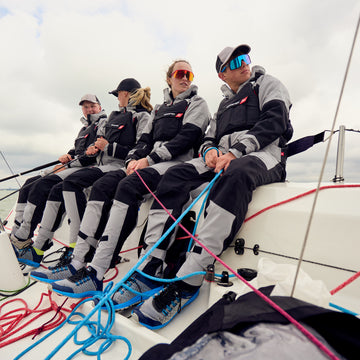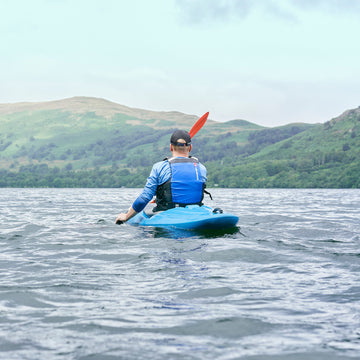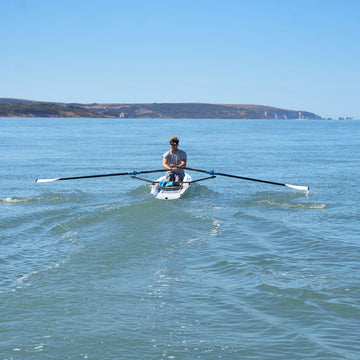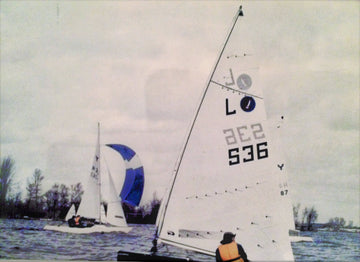Tell Tales inside our telltale pack we pretty much say that there is no right or wrong place to put them - except ideally no closer than 1/3 back from the mast or luff wire. We recommend, for example, the telltales on a Laser sail are placed in triangle formation (so you can average the disturbed air and work out what they are saying) and most importantly, where you can see them! But that is not to say that telltales stuck to the leech at a batten pocket might give you some interesting information. I would suggest that the less familiar you are with a class of boat, the more telltales you should employ to help work out the trickier parts of the sail.
 Photo by Klaus Selen or Aarne Kuusi Finnish Europe Coach at Spring Regatta Loostrecht Easter Regatta 1985
Photo by Klaus Selen or Aarne Kuusi Finnish Europe Coach at Spring Regatta Loostrecht Easter Regatta 1985Taken to the extreme, I was fascinated by the number of telltales on Jyrki Taiminen's Europe Sail at the Loosdrecht Easter Regatta in 1985. This shot was taken before he added even more telltales! It finally resembled a hedgehog rather than a sail - but the pattern of the telltales on the sail was fascinating; a good distraction which was my excuse for him soundly beating me.
What, where and why?
Leech telltales indicate when the sail is stalled or on the edge of stalling, whereas luff telltales placed strategically at different heights can help you balance the fullness throughout the height of the sail.
Some boats offer an in-haul control to adjust the fullness near the mast. I have used this to good effect in a Solo and Europe but they are also used in the Finn as well. For Example: If the upper most luff telltale breaks (drops) on the windward side when heading up, BEFORE the lower telltale, then I would ease the outhaul and pull on the in-haul until they both broke at the same time. Effectively I would be moving the centre of fullness forward at the bottom of the mast to match the centre of fullness position at the top.
When you see a leech telltale stalling (falling behind the leech) then your action would be to reduce the amount of effort the wind has to do before it exists the sail. For Un-stayed boats (Europe, Laser, Aero etc.) you would tend to have to bend the mast more to take out luff curve, which in turn reduces the camber in the sail. This makes the leech more open 'relative' to the maximum camber of the sail. If the boat has a low luff curve (very strong mast to the sail) then easing the kicker or mainsheet might release the leech without adding too much excess material around the luff. Basically - time to experiment. Note: the Mark 6 Radial sail sometimes needs more vang to open the leech when sailing to windward. Boats with a stayed rig have much more control over the mast bend and tend to set the bend to match the luff of the sail. You can then ease the kicker or sheet to let the upper telltales open and breathe rather than stall.
As a crew with a jib to play, you have ultimate control over the leech with both the angle the sheet is taken and the tension in the sheet. Shallowing the sheeting angle to follow along the foot of the jib will open the leech, whereas sheeting at a tighter angle (towards the leech) will close the leech. I like Adam Bowers description of the 4th corner of a jib - His concept makes you think of the crucial part of the sail that manages the slot between the main and jib.
Its safe to say that the more telltales you use to learn your rig and sail the better. Once you are up to speed with the sail, then you can reduce the number to a less distracting quantity.
Grab yourself a pack or two of our Teflon® Coated Telltales and have some fun (each pack contains 3 red and 3 green) - The Teflon® treatment helps them from sticking to the sail when wet and improves their 'readability'.
Happy Sailing!




















 Select Store
Select Store
 EU
EU
 US
US
